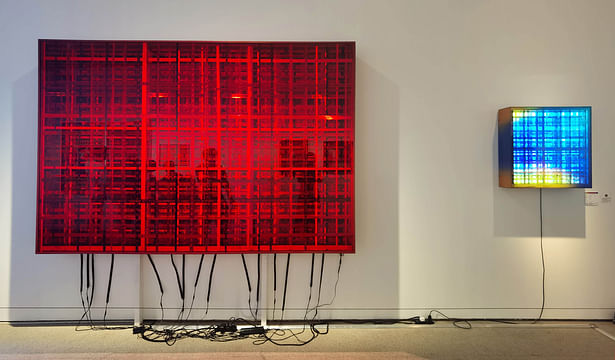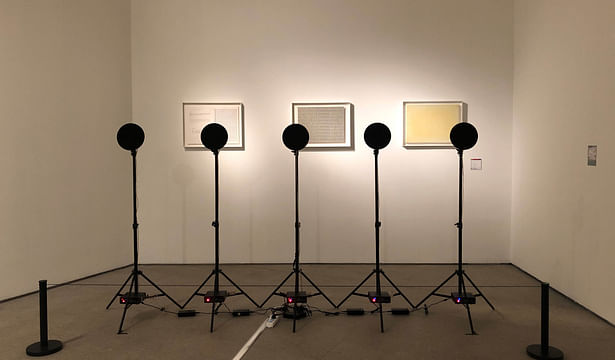
Hong Kong, HK | Shenzhen, CN | Shanghai, CN | Beijing, CN | Guangzhou, CN | Shenyang, CN | Chongqing, CN | Macau, CN | Singapore, SG | Dubai, UAE | Riyadh, SA | Manila, PH
How do we create an aesthetically and spiritually satisfying experience in our urban spaces? Going beyond functionality, a successful experience requires more than sophisticated hardware and a well-designed layout. This is where art and emotions come in. Today we sat down with Joanna Wong, General Manager of LWK + PARTNERS’ spatial aesthetics arm ARTUP, to discuss the relationship among aesthetics, space and the city. We also heard her team’s progress of drumming up the new ARTUP Gallery, which is opening in months. First up on the new space’s event programme will be a graduation show for introducing emerging artists to the public.
Since its launch in 2019, ARTUP has been working closely with LWK + PARTNERS Interior Design Team. While interiors focuses on spatial planning and designs the user experience, ARTUP curates a unique overtone for each space by selecting the right materials and decorations from an artist’s point of view. ARTUP also works alongside the practice’s Landscape Team to elevate outdoor settings with sensational art pieces, which is possible with LWK + PARTNERS’ multidisciplinary nature with comprehensive design and management capabilities.
Earlier, ARTUP staged an exhibition called Original Art and Barcelonian Contemporary Art with Shenzhen Original Art Association in Shenzhen Book Mall Central. The event drew a welcoming response from the public.
Original Art and Barcelonian Contemporary Art Exhibition
About Joanna Wong
After obtaining a double master’s degree in the UK, Joanna returned to China, where she designed, built and managed multiple large-scale villa projects, hotels, clubhouses, show flats, mixed commercial and residential developments as well as renowned schools. She received a silver prize in the UK’s New Designer Awards and is named one of the Top Ten Chinese Design Elites and Top Ten Shenzhen Designers. She was a senior lecturer at the design school of Shenzhen Institute of Technology and a tutor to final year students at Shenzhen Technology University. Joanna is currently LWK + PARTNERS Associate Director – Decoration, ARTUP General Manager, ARTUP Gallery Chief Curator and a PhD student at Universitat Autònoma de Barcelona.
Dialogue with Joanna
When was your first encounter with spatial aesthetics?
As a teenager I studied art at Guangzhou Academy of Fine Arts. Everything in that good old campus was in some form of disrepair, but indescribably beautiful. Every leaf, tree, branch and tile intrigued me. It then got me thinking: why is that? By the time I got to university and took aesthetics as part of philosophy, then I knew it. Beautiful things, simply by their very existence, can transform the functional nature of their surrounding space. Beauty is not bound by spatial dimensions and is embraced in every space. It was a eureka moment for me.
The aesthetics of space and the aesthetics of life are neighbours and companions. As life progresses and times change, the aesthetics of life have come to represent the right values and beliefs. Values affect our thoughts, which then guide our actions. We must keep exploring to live an aesthetic way of life. Faith is the prime spiritual pursuit in life. Thence we find our understanding of beauty.
Works by ARTUP-represented artists (images provided by ARTUP)
What is the role of art in interior design and urban space? How is it related to our daily life?
Contrary to common perceptions, art and aesthetics are not castles in the sky. They are practical and close to us. In fact, aesthetics is a compulsory subject for Philosophy students in mainland China today. Interior design, which we are so familiar with at ARTUP, is a collaborative process where humanity, art, science and space meet. While art celebrates beauty and science needs reason, humanities deal with both logic and emotions. Well-designed interiors are a marriage of science and art, and a reflection of human culture. That’s why so many top interior designers are also art masters.
Today, art has become an important component of the urban space. It is also a tool for cities’ rebranding and urban upgrades. It shapes micro-environments and gives a city new energy and dynamism. It is becoming an everyday necessity for people as they seek a richer living experience.
As living standards rise in mainland China, people have also seen a growing demand for art, with increasingly sophisticated tastes and a desire for more and more interactive works of public art. Everyone in the country is expecting to see more advanced technology in art. As creators of urban spaces, we need to keep up with the times.
Joanna (centre) at Original Art and Barcelonian Contemporary Art Exhibition
ARTUP promotes original art and traditional culture. New media and digital art are especially picked out – how do they affect the making of space?Technology is exerting a powerful influence on urban art. It empowers art inside out. Traditional design and crafts are no longer enough to satisfy the audience. Design must therefore pay more attention to new technologies and means. Artists are expected to be much more open-minded in their approach and tools, apply technology throughout the entire design process and the expression of design concepts, as well as display much more originality in style.
We must acknowledge that new art has to be supported by tech, so we must deal with the relationship between them. A real, substantial change is inevitable.
ARTUP and LWK + PARTNERS spend great efforts researching and exploring the use of technology and materials. For example, we tried using 3D printing in a 5D art installation. We also try out new materials, ones that are heat- and impact-resistant, for example, to go with existing artworks, traditional paintings or sculptures. To achieve a good balance of visual impact and practicality, we work with excellent production crews from overseas and creative media artists and designers who are experienced in local design projects. One great thing about new media and technologies is that they save both time and cost in the creation of works while archiving a better result.
Works by Hehe Zhang, a graffiti artist represented by ARTUP who collaborated with Nike (images provided by ARTUP)
 Works by Hehe Zhang, a graffiti artist represented by ARTUP who collaborated with Nike (images provided by ARTUP)
Works by Hehe Zhang, a graffiti artist represented by ARTUP who collaborated with Nike (images provided by ARTUP)Are there any elements of traditional Chinese architecture that are underrepresented and deserve to be reintroduced into today’s interior design?
Culture and architecture are mutually constructive. Advancement in architecture is conducive to cultural progress, while cultural change is reflected in new buildings. It is through architecture, or its elements, that the values of traditional Chinese culture are conveyed.
White ash, bamboo wood, stone, green bricks and green tiles are traditionally common building materials but are also frequently used in modern cultural buildings. Cultural heritage, such as the art of incense burning which was a key practice in ancient China, as well as that of tea making, should pass on and be integrated into our living environment.
In Chinese architecture, we respect the rules of nature and strives to establish a harmonious relationship with it. Modern technology allows us to strike balances between environmental protection and economic benefits; the natural and manmade; tradition and innovation. Our architecture is one that brings together production, living and ecology in a sustainable state, potentially setting an example for the world.
There’s this Chinese saying: “Architecture grows from the ground.” The idea of heaven and man are one is deeply rooted in Chinese culture. It’s also increasingly being appreciated across the world nowadays. We should reintroduce nature into our living spaces and architecture, and rethink how design elements, such as architectural structures and materials, reveal the human-nature relationship.
Works by ARTUP-represented artists (images provided by ARTUP)
Works by ARTUP-represented artists (images provided by ARTUP)
Why locate ARTUP Gallery in Shenzhen?
Shenzhen has always been culturally ahead of its time, especially with its spatial and public art development in the country. China’s first public art centre indeed emerged in Shenzhen. When the concept of urban sculpture was introduced in China in 1982, Shenzhen already had a sculpture studio that created groundbreaking works like Pioneering Bull.
Unlike traditional artists, a public artist is first and foremost a social artist, who intends to speak to the community and the city as a whole, and understand its thoughts. When Shenzhen Sculpture Academy decided to make a sculpture about A Day in the Life of a Shenzhener, the artist personally went into the community and distributed questionnaires to find out what kind of work the public wanted to see. In recent years, the Shenzhen government has made great efforts to support folk art and public art. For example, there is now a newly opened public art centre, the Shenzhen Bay Public Art Season and The Museum of Contemporary Art & Planning Exhibition, which features urban environmental aesthetics.
Graduation projects of Central Academy of Fine Arts students (images provided by ARTUP)
 Graduation projects of Central Academy of Fine Arts students (images provided by ARTUP)
Graduation projects of Central Academy of Fine Arts students (images provided by ARTUP)
 Graduation projects of Central Academy of Fine Arts students (images provided by ARTUP)
Graduation projects of Central Academy of Fine Arts students (images provided by ARTUP)Why are you organising a graduation show?
We started with asking ourselves: what can we do for society? We always wanted to go one step further in serving our contemporary urban art. We think of art school graduates, whose works often take a long time to find an audience. As a community group, we have a duty and responsibility to make these outstanding works and artists known to the public, connect them with the market and society, and to make an impact. This is why we are organising a graduate show. One with a strong social dimension, mainly showcasing avant-garde art like installations, sculptures, digital artworks, etc., so that young and emerging artists have a platform to prove themselves. This has been our initial intention.
No Comments
Block this user
Are you sure you want to block this user and hide all related comments throughout the site?
Archinect
This is your first comment on Archinect. Your comment will be visible once approved.